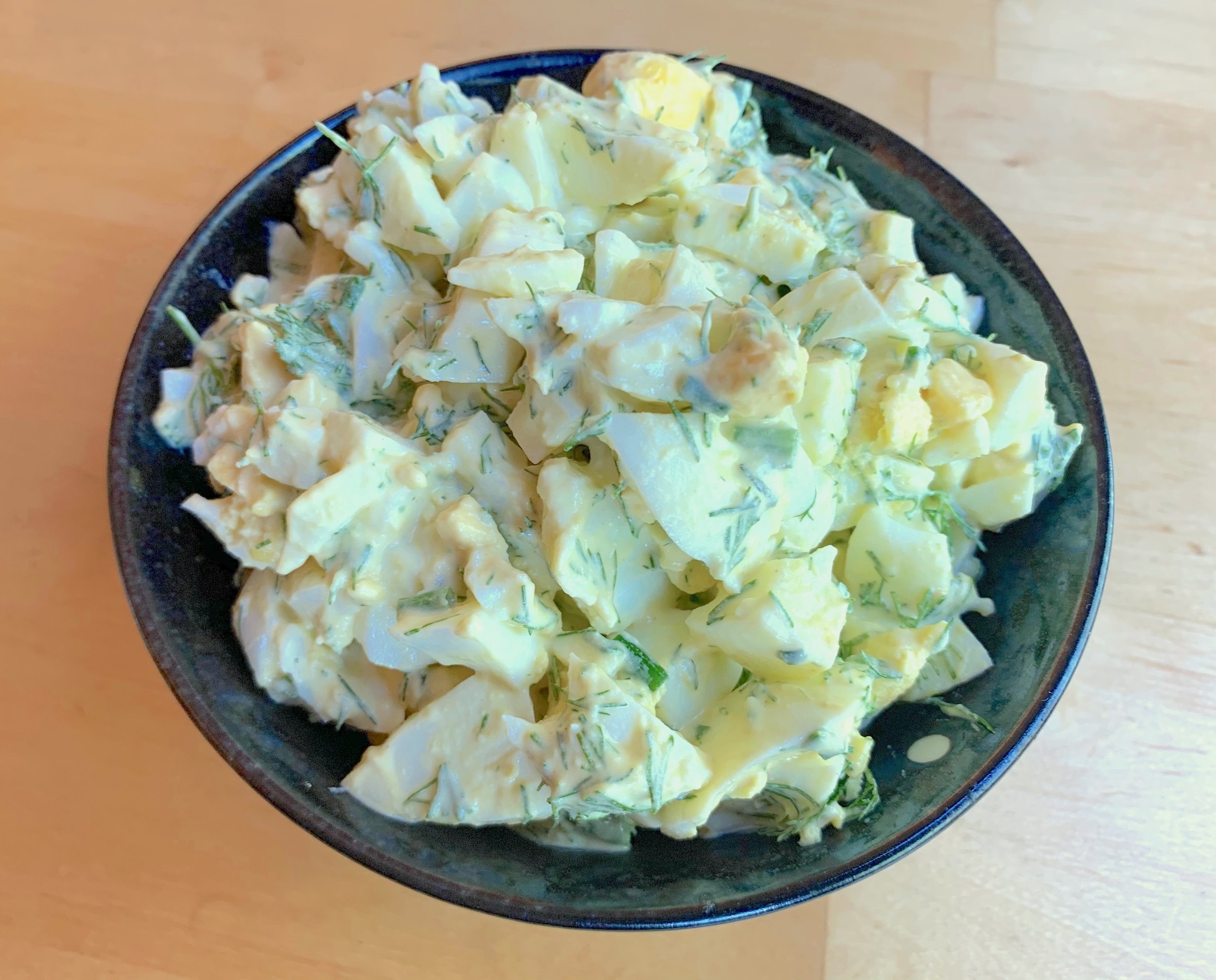Kimchi Pancake

김치전 (Kimchijeon)
Kimchi is a staple of Korean cuisine, and is considered a national dish. The people of the Korean peninsula have been salting and fermenting vegetables since the Korean Three Kingdoms Period, over two millennia ago. Today, South Koreans consume 1.6 million tons of kimchi every year, and many Korean home kitchens have dedicated kimchi refrigerators.[1] Kimchi has even been to space! [2] While many in the West are most familiar with spicy and garlicky kimchi made from napa cabbage,[3] there are actually hundreds of types of kimchi, made from many different vegetables. They are served on their own as appetizers, or used as ingredients in dishes. One dish made with kimchi is a savory pancake known as kimchijeon. It’s usually served as an appetizer or banchan (side dish),[4] and is quite simple to make!
Ingredients
¾ cup flour
¼ cup cornstarch
1 egg
1 cup napa cabbage kimchi
¼ cup kimchi brine
1 scallion
¾ cup water
½ tsp baking soda
Vegetable oil
Add the dry ingredients to a large mixing bowl—the flour, cornstarch, salt, and baking soda. Mix well to combine. The cornstarch in the batter makes it more difficult for the flour to form gluten, resulting in a lighter and more tender pancake. Then add the egg, 3/4 cup water, and ¼ cup kimchi brine, and mix to bring the batter together. The kimchi brine isn’t as spicy as it looks, but will give the pancake a lovely red color! Do not overmix the batter, as too much gluten formation will result in a gummy pancake rather than a tender one. Try to minimize the number of whisks until the batter is smooth—small lumps are okay!
Chop the scallions into 2 inch pieces, and chop the kimchi into thin strips about ¼ inch wide. Fold the scallions and kimchi into the batter, making sure the leaves don’t clump up.
Heat 1 tablespoon of vegetable oil in a nonstick skillet over medium-high heat. When the oil comes up to temperature, ladle some of the batter into the skillet. The amount of batter will depend on the size of your skillet, but we want to make as thin of a layer as possible—about 1 cup of batter should be enough for a 12 inch skillet. Spread the batter out with the back of the ladle, and try to distribute the vegetables so that there are no large clumps of kimchi. Cook for 5 minutes on the first side, until the pancake is relatively solid and is browned and crisp. Then flip the pancake, and drizzle an extra teaspoon or two of oil around the edge of the pancake. Swirl the skillet to distribute the oil, and press gently down on the pancake with a spatula. Both will encourage better browning on the second side of the pancake. Cook for an additional 2-3 minutes, or until both sides are crisp and the pancake is fully cooked.
Remove the pancake from the skillet, and repeat with the remaining batter, adding more vegetable oil as necessary. Cut the pancakes into wedges and serve hot, topping with toasted sesame seeds if desired.
Substitutions
Other types of leafy and spicy kimchi, such as those made of mustard leaves, can be used to make these pancakes. If you prefer a spicier pancake, add some Korean chili flakes to the batter. To make a less spicy pancake, reduce the amount of brine and replace it with water. A common variant mixes some cooked pork pieces into the batter as well.
[1] A kimchi refrigerator is designed to provide the ideal environment for fermentation of kimchi. They are generally colder and more humid than a standard refrigerator, with less air circulation and more consistent temperature control. In a standard refrigerator, kimchi will become too sour after about a week.
[2] The first South Korean astronaut, Yu So-yeon, launched to the International Space Station in 2008. She carried packs of specially prepared kimchi with her. Developing this “space kimchi” was a multi-million dollar research effort. Normal kimchi contains live bacterial cultures and has a short unrefrigerated shelf life—both big problems for space food, which has to be inert and stable at room temperature. Space kimchi was a success, and techniques developed to stabilize kimchi for the mission have since been used to stabilize other fermented food, reducing shipping costs for all sorts of pickled and fermented foods on Earth.
[3] Spicy napa cabbage kimchi is known as baechu-kimchi (배추김치).
[4] Kimchijeon is also often served in bars, as it is considered an anju (안주): a food which is good to eat when drinking.
Recipe
Prep Time: 5 min Cook Time: 7 min Total Time: 12 min
Difficulty: 1/5
Heat Sources: 1 burner
Equipment: nonstick skillet
Servings: 6
Ingredients
¾ cup flour
¼ cup cornstarch
1 egg
1 cup napa cabbage kimchi
¼ cup kimchi brine
1 scallion
¾ cup water
½ tsp baking soda
Vegetable oil
Instructions
1. In a large mixing bowl, combine the flour, cornstarch, salt, and baking soda. Add the egg, ¾ cup water, and ¼ cup kimchi brine, and mix the pancake batter until smooth.
2. Chop the scallions into 2 inch pieces, and chop the kimchi into strips. Fold the vegetables into the batter.
3. Heat 1 tbsp vegetable oil in a nonstick skillet over medium-high heat. When the oil comes up to temperature, ladle into the skillet just enough batter to make a thin layer, and spread the vegetables out to form a uniform layer.
4. Cook for 5 min on the first side, or until the pancake is browned. Flip the pancake, adding 2 tsp of oil to the skillet around the edge of the pancake for better browning. Cook for 2-3 more min, or until both sides are crisp and the pancake is fully cooked. Remove from the skillet, and repeat for the remaining batter, adding more oil if necessary.
5. Cut the pancakes into pieces, and serve.












